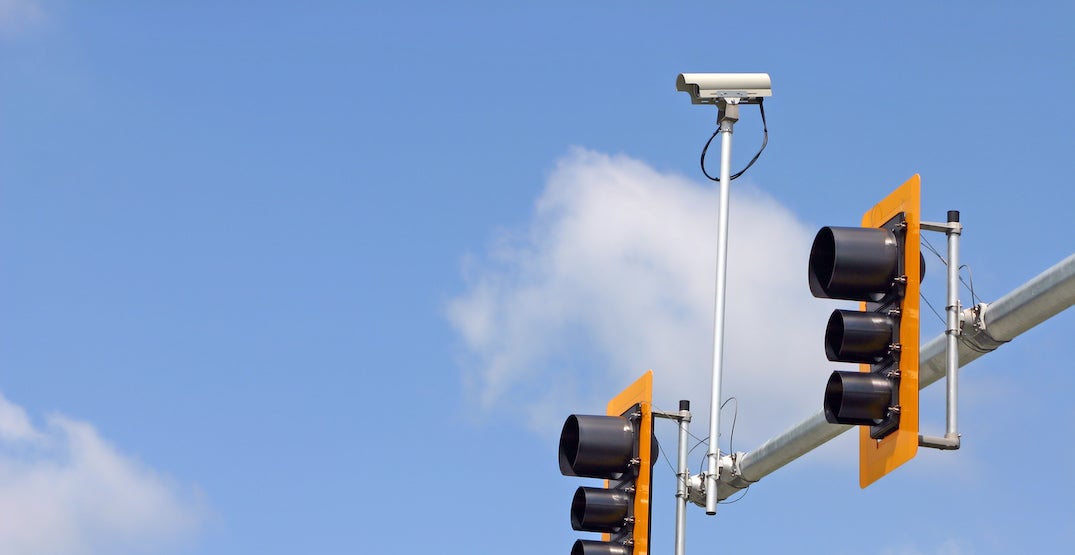Suffolk’s traffic cameras: More human than you think
Published 9:29 pm Monday, October 16, 2023
|
Getting your Trinity Audio player ready...
|
When the Suffolk City Council approved the use of traffic enforcement cameras in March 2023, you could hear the grumblings from the community almost immediately. There is more to these camera systems than sending a photo and a citation through the mail. In between the infraction and receiving a citation, there is a human component vetting those tickets, and yes, they are legal to use.
Virginia State Code § 46.2-882, which was passed by the General Assembly in 2020, allows for the “use of photo speed monitoring devices in highway work zones and school crossing zones.”
Virginia code 15.2-968.1, which dates back to 2007, allows for the use of cameras at red lights.
The traffic enforcement camera system is more than snapping a photo and mailing a citation. The newly implemented traffic enforcement systems deployed by the City of Suffolk have a human component that helps verify the accuracy before any citations are mailed.
The human component is where the accuracy verification comes into play.
For every citation that is produced through the use of a traffic enforcement camera, there is a process to vet for accuracy. That process begins with the vendor, Altumint, according to Suffolk Police Department Deputy Chief of Operations Maj. Cassandra Garvin.
“The company does a first wash-through,” Garvin said. “So, there are photos, images that will be captured that may never come to the police department because there is a quality control aspect on the vendors’ part.”
Once a citation passes the vendor’s quality control, the citation is sent to SPD in a queue system for review, where multiple SPD officers will go through each citation to verify a myriad of factors before determining whether to accept or reject the citation.
“We have eight officers that are dedicating some part of their day to this,” Garvin said. “We have a number of light-duty officers who are taking part. We also have individuals from our special operations unit, our traditional traffic unit, who also have a hand in this. In January, I believe, we will be bringing in two part-time officers to handle the bulk of this, and they are sworn officers, fully certified in the Commonwealth of Virginia.”
In August, total events across all camera types totaled 45,932, with 18,085 rejected. Most of these events came from the work zone cameras, at 42,673 – public schools were not in session – with 16,628 rejected. In comparison, work zone events decreased dramatically in September to 28,359, with rejections only dropping slightly to 13,559. With the start of school in September, events in school zones totaled 11,103, with 3,945 being rejected. Across 50 school bus stop cameras, 10,246 events were logged, most of which were rejected, only mailing 29 citations. Garvin said they must observe very specific elements, which accounts for the higher than expected rejection rate.
“Those [school bus stop arm events] are very specific elements you have to observe in order to approve that ticket,” Garvin said. “Is the bus in motion? Is the arm extended fully? Are the lights flashing, then the vehicle proceeds past? You don’t just click accept and go through it.”
Garvin also said they worked with Suffolk Public Schools to educate bus drivers on how these cameras operated.
“It’s just an education aspect for everyone involved,” Garvin said.
The program’s goal is to ensure safer roadways in the City of Suffolk, and according to Garvin, the process is working.
“We have seen through the numbers that it is slowing people down because ultimately, that is what we want, is safer roadways. We’re not looking to make money off this,” Garvin said. “We are looking to keep our roadside workers safe. We’re looking to keep the motoring public safe. We want people to slow down and get where they are going.”
Currently, the work zone, school zone, and school bus stop arms are the only cameras in operation. The red light cameras will come online in a few weeks. For those, the city has employed nine out of the 11 allowed by Virginia law.
Garvin explains in work zones. These cameras are only operational when workers are present.
“We’re only enforcing during the hours when active work is occurring,” Garvin said. “Which means that someone is doing work somewhere within that work zone.”
Garvin says these work zones can be miles long, and not seeing a person does not mean someone is not working.”
Department of Public Works Community Outreach Coordinator Wayne Goldsworthy-Jones said scheduling is done through each work zone project engineer, who provides Altumint with the schedule for each specific zone.
“Public Works handles the scheduling,” Goldsworthy-Jones said. “Every work zone has a project engineer. Everything is already scheduled, so they [project engineer] notify the vendor, which is Altumintm, and they schedule the cameras accordingly.”
Once the motorist is captured in one of these zones traveling more than nine miles per hour over the posted speed limit, the camera system engages and captures a photo and sometimes video.
Gravin also pointed out that usage of these systems is bound by the Virginia Code that allows for a nine-mile-per-hour buffer, meaning the cameras will not capture a motorist until they reach 10 miles over the posted work zone speed limit.
“We are also constrained by the code of Virginia in terms of when we can start to enforce the speed citation program,” Garvin said. “You get a buffer, if you will, of nine miles [per hour] over the speed limit. At 10, we start to cite.”
Interim Police Chief James (Danny) Buie said the key is to obey the speed limit,
“The key is to obey the speed limit,” Buie said. “The speed limit’s there for a reason, to keep us all safe. We just all need to obey the speed limit.”
The camera systems can track multiple vehicles across multiple lanes, Garvin says.
“They can track multiple vehicles, multiple times,” she said. “These things actually have a very wide scope in terms of how many vehicles, how many lanes they could pick up vehicles.”
The city is not using the cameras on any road larger than two lanes in one direction.
Once the red light cameras go live, vehicles that enter the intersection after the light has turned red for a half second will be photographed. The enforcement system uses a high-speed video camera to determine when the signal is red. Once it has been red for more than a half second, the system tracks vehicles approaching the stop bar. If a vehicle crosses the stop bar, the system records an image prior to the stop bar, showing the signal was red. The system continues to track the vehicle as it travels through the intersection. Once fully into the intersection, a second photograph is taken of the vehicle proceeding through the intersection while the signal is still red. A 12-second video of the violation is recorded to show the violating vehicle’s progression through the intersection.
Anyone receiving a citation has 30 days from when it was mailed to pay. Garvin says her goal is to keep the queues no longer than two weeks old.
As for fines, work zone and school zone fines are $100, red light running violations $50, and school bus arm violations $250.
Fines collected in excess of the contract with Altumint will go into a transportation fund dedicated to roadway safety improvements throughout the city. However, what those improvements might be has yet to be determined.
School zones with enforcement cameras:
Creekside Elementary
Elephants Fork Elementary
Florence Bowser Elementary
John Yeates Elementary
Kings Fork Middle School
Kings Fork High School
Nansemond-Suffolk Academy – Pruden Blvd and Harbour View Rd
Nansemond Parkway Elementary
Mack Benn Jr. Elementary
Oakland Elementary
Work zone speed enforcement cameras
Route 58/Holland Road widening project
Pruden Boulevard at College and Career Academy Roadway Project
Red light photo enforcement cameras
Holland Road at West end of Suffolk Bypass
Harbour View Blvd. at Bridge Road
College Drive at Bridge Road
North Main Street at West Constance Road
Pruden Boulevard at Lake Prince Drive
Shoulders Hill Road at Bridge Road (After roadway project construction)
Pruden Blvd. at Lake Prince Drive
Two additional locations yet to be determined







